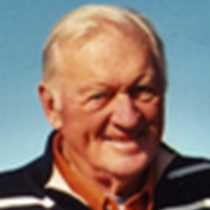Astoria & the Columbia River Bar
It’s not unusual to be surprised by the “River of the West.” After exploring fresh water in the Columbia’s middle reaches, this morning we awoke within view of the “bad smelling lake,” Native vernacular for the Pacific Ocean. Tidal action was evident – protruding pilings of former salmon canneries; the ocean’s last weather pattern reflected in the sky; Caspian terns, gulls and cormorants on duty. By 7:30 AM Sea Lion was tied up near downtown Astoria, the oldest “American” city west of the Rocky Mountains (1811).
The world-class Columbia River Maritime Museum opened at 9:00 AM. Founded in 1962, the museum holds six galleries, a first-rate bookstore, and owns the nearby Lightship Columbia which once warned sailors of the treacherous river bar, often called “Graveyard of the Pacific.” After an hour at the museum motor coaches took guests 11 miles south to Fort Clatsop, 1805-1806 Corps of Discovery winter home. After a film and orientation hosted by National Park Rangers, we visited the recently re-built log building which represented the original shelter that housed two U.S. Army captains, 29 non-commissioned officers and men, a woman and her babe (and “Seaman,” a large Newfoundland dog).
The motor coach rides were narrated by the Naturalist and Historian, sprinkled with Lewis & Clark stories, geological comment about the dominance of Columbia River waters, a running history of Astoria’s founding, growth and current efforts to welcome tourists, retirees, and local industry, and spiced with Native tales about the once-powerful Chinook, Clatsop and Tillamook nations.
Several guests explored ever-changing Astoria in the afternoon while others joined Staff members for a visit to the Astoria Column atop Coxcomb Hill. Both the column and the hill offered views of the Columbia’s mouth, Point Adams (Oregon), Cape Disappointment (Washington), glimpses of the Pacific Ocean, and the dim outline of Saddle Mountain, Oregon’s highest peak in the Northwest Coast Range (3,300 feet). About 12 guests, the Historian and Wellness Coordinator, walked down a trail from Coxcomb Hill through a wild patch of rainforest, climbing over downed trees and sampling blackberries along the route – working up appetites for tonight’s Captain’s dinner.
It’s not unusual to be surprised by the “River of the West.” After exploring fresh water in the Columbia’s middle reaches, this morning we awoke within view of the “bad smelling lake,” Native vernacular for the Pacific Ocean. Tidal action was evident – protruding pilings of former salmon canneries; the ocean’s last weather pattern reflected in the sky; Caspian terns, gulls and cormorants on duty. By 7:30 AM Sea Lion was tied up near downtown Astoria, the oldest “American” city west of the Rocky Mountains (1811).
The world-class Columbia River Maritime Museum opened at 9:00 AM. Founded in 1962, the museum holds six galleries, a first-rate bookstore, and owns the nearby Lightship Columbia which once warned sailors of the treacherous river bar, often called “Graveyard of the Pacific.” After an hour at the museum motor coaches took guests 11 miles south to Fort Clatsop, 1805-1806 Corps of Discovery winter home. After a film and orientation hosted by National Park Rangers, we visited the recently re-built log building which represented the original shelter that housed two U.S. Army captains, 29 non-commissioned officers and men, a woman and her babe (and “Seaman,” a large Newfoundland dog).
The motor coach rides were narrated by the Naturalist and Historian, sprinkled with Lewis & Clark stories, geological comment about the dominance of Columbia River waters, a running history of Astoria’s founding, growth and current efforts to welcome tourists, retirees, and local industry, and spiced with Native tales about the once-powerful Chinook, Clatsop and Tillamook nations.
Several guests explored ever-changing Astoria in the afternoon while others joined Staff members for a visit to the Astoria Column atop Coxcomb Hill. Both the column and the hill offered views of the Columbia’s mouth, Point Adams (Oregon), Cape Disappointment (Washington), glimpses of the Pacific Ocean, and the dim outline of Saddle Mountain, Oregon’s highest peak in the Northwest Coast Range (3,300 feet). About 12 guests, the Historian and Wellness Coordinator, walked down a trail from Coxcomb Hill through a wild patch of rainforest, climbing over downed trees and sampling blackberries along the route – working up appetites for tonight’s Captain’s dinner.




